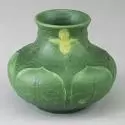“Am I Covered?”

Q. – In regards to my antiques, what does my standard Homeowner’s Policy cover?
A. – In the event of a catastrophic event that destroyed your entire home and its contents, your personal property is typically covered up to a percentage of the listed value of the home. If your home is insured for $300,000 with a 50% personal property limit, then you would receive a check for $150,000 to cover everything inside the house, from appliances and clothing to antiques and memorabilia.
Under a standard Homeowner’s Policy, if you have an antique that is stolen or destroyed without inclusion in a secondary Fine Arts Policy, then the burden of proof lies entirely on you as the homeowner. If you have “replacement cost coverage” in your standard Homeowner’s Policy, you have to produce documentation to prove that (1.) you owned the piece and (2.) its actual value. This would be in the form of receipts, photographs and a written appraisal made prior to the incident.
If the adjustor does not feel you have presented adequate documentation, you will not receive full replacement value.
Q. – How much would a Fine Arts Policy cost me?
A. – The cost of coverage will vary according to where you live and what kind of dwelling you have, but a typical Fine Arts Policy for antiques can cost as little as $6 per $1000 of coverage per year. In other words, it might cost you $18 to insure a $3000 Grueby vase.
Q. – Does it cover all of my antiques?
A. – Only those listed, described and assigned a value on the Fine Arts Policy would be insured.
Q. – Do I have to get an appraisal of each item I list?
A. – Most insurance companies only require a written appraisal for items valued at more than $10,000.
Q. – Would my Fine Arts Policy cover antiques damaged by an earthquake, flood, fire, theft or accident?
A. – If the policy states that it is an “all peril, all risk” Fine Arts Policy, then it would include damage from everything from earthquakes and floods to fire, theft and accidental breakage.
Q. – How much am I actually paid for each item?
A. – Under the terms of a Fine Arts Policy, once the insurance company and the homeowner have signed an “agreed value” policy, then the insurance company will pay 100% of the listed value for any item on the Fine Arts Policy.
Q. – Is there a deductible subtracted from the listed value?
A. – Typically, no, but you may be able to reduce your premium cost by agreeing to a deductible amount.
Q. – How often should I review my policy?
A. – If values are rising rapidly, you should review your policy every year when it comes up for renewal. Never let it go beyond five years without checking the values — and to make sure that you’re not still paying insurance on something you have sold.
Note: If you are an antiques dealer and travel to shows, you need to clarify your coverage with your insurance agent on items removed from your home. Not all company policies are the same, so get to know your policy before you find yourself filing a claim.
Additional note: If you are moving, get clarification from your insurance agent on whether or not your Fine Arts Policy remains in effect during the moving process.
Suggestion: Print this page, call your agent, and ask him/her for the answers to these questions. You may be surprised at what you learn.
– Bruce

